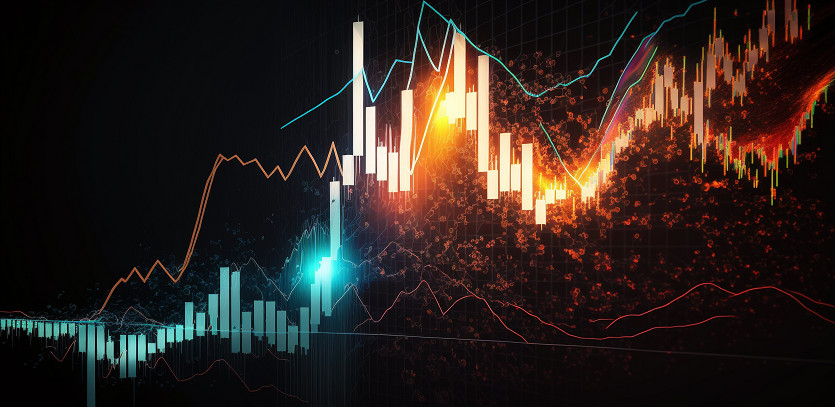Candlestick charts are a popular way to visualize price action in the financial markets. They are made up of individual candlesticks, which represent the price movement of an asset over a specific period of time. Candlestick patterns are formed by the combination of different candlesticks.
Bullish candlestick patterns indicate that the price of an asset is likely to rise. Bearish candlestick patterns indicate that the price of an asset is likely to fall. There are many different bullish and bearish candlestick patterns, but some of the most common include:
Bullish engulfing pattern: This pattern is formed when a white candlestick completely engulfs a black candlestick. It indicates that the bulls have taken control of the market and are likely to continue pushing the price higher.
Hammer pattern: This pattern is formed when a small body candle with a long lower wick appears. It indicates that the bears tried to push the price lower, but the bulls were able to defend the support level.
Doji pattern: This pattern is formed when a candlestick has a small body and no wicks. It indicates that there was a lot of indecision in the market, and the bulls and bears were evenly matched.
Bearish engulfing pattern: This pattern is formed when a black candlestick completely engulfs a white candlestick. It indicates that the bears have taken control of the market and are likely to continue pushing the price lower.
Shooting star pattern: This pattern is formed when a small body candle with a long upper wick appears. It indicates that the bulls tried to push the price higher, but the bears were able to defend the resistance level.
How to Identify Bullish and Bearish Candlestick Patterns
Bullish and bearish candlestick patterns can be identified by looking at the following characteristics:
The color of the body: Bullish candlesticks have white bodies, while bearish candlesticks have black bodies.
The length of the wicks: Bullish candlesticks typically have short wicks, while bearish candlesticks typically have long wicks.
The placement of the body: The body of a bullish candlestick should be placed above the open and close of the previous day. The body of a bearish candlestick should be placed below the open and close of the previous day.
How to Choose the Right Candlestick Pattern
The right candlestick pattern to use will depend on the specific trading strategy you are using. However, some general tips for choosing a candlestick pattern include:
Looking for patterns that have a high success rate.
Using patterns that are appropriate for the time frame you are trading.
Considering the overall trend of the market before entering a trade based on a candlestick pattern.
How Candlestick Patterns Affect Trading
Candlestick patterns can provide valuable insights into the direction of the market. By identifying bullish and bearish candlestick patterns, traders can increase their chances of making profitable trades. However, it is important to remember that candlestick patterns are not always reliable, and they should not be used as the sole basis for making trading decisions.
Which Indicators Require to Identify Candlestick
There are a number of indicators that can be used to identify candlestick patterns. Some of the most common indicators include:
-The moving average
-The relative strength index (RSI)
-The stochastic oscillator
-The Bollinger bands
Experts agree that candlestick patterns can be a valuable tool for traders. However, they also caution that candlestick patterns should not be used as the sole basis for making trading decisions. They recommend that traders use candlestick patterns in conjunction with other technical analysis tools to increase their chances of making profitable trades.
Conclusion
Candlestick patterns are a valuable tool for traders. They can provide insights into the direction of the market and help traders to make profitable trades. However, it is important to remember that candlestick patterns are not always reliable, and they should not be used as the sole basis for making trading decisions.





